Ten Restaurants That Changed America
, Introduction by Danny Meyer
From Delmonico’s to Sylvia’s to Chez Panisse, a daring and original history of dining out in America as told through ten legendary restaurants.
Combining a historian’s rigor with a foodie ’s palate, Ten Restaurants That Changed America reveals how the history of our restaurants reflects nothing less than the history of America itself. Whether charting the rise of our love affair with Chinese food through San Francisco’s fabled The Mandarin, evoking the richness of Italian food through Mamma Leone’s, or chronicling the rise and fall of French haute cuisine through Henri Soulé’s Le Pavillon, food historian Paul Freedman uses each restaurant to tell a wider story of race and class, immigration and assimilation. Freedman also treats us to a scintillating history of the then-revolutionary Schrafft’s, a chain of convivial lunch spots that catered to women, and that bygone favorite, Howard Johnson’s, which pioneered midcentury, on-the-road dining, only to be swept aside by McDonald’s. Lavishly designed with more than 100 photographs and images, including original menus, Ten Restaurants That Changed America is a significant and highly entertaining social history.
Paul Freedman is a history professor at Yale University. The editor of the ICP Award-winning Food: The History of Taste and the author of Out of the East: Spices and the Medieval Imagination, he lives in Pelham, New York.
Paul Freedman
What are the restaurants that changed American’s dining habits or food perceptions? Chances are that asking ten people would get you eleven or so different lists. Hostrian Paul Freedman came up with a compelling and well documented list which he has shared in his new book Ten Restaurants that Changed America. Paul Freedman was kind enough to sit down and talk with us about the restaurant that he chose and why.
BAF: The first obvious question is, how did you wind up with these ten?
Paul Freedman: Well, the idea was influential and not the best, obviously. A restaurant like Howard Johnson or Schrafft’s never claimed to be among the blooming treasures of America but were very important in how people have eaten over the last century or so. I also wanted restaurants in certain categories, so it seemed obvious you couldn’t do a book about American restaurants without having a Chinese restaurant. The same way with Italian. I wanted to have restaurants that reflected the rather complicated relationship to France. Of the restaurants, about half of them are French, claimed to be French, all variations on French food or deliberately rejected the French food in the case of the Four Seasons.
BAF: I guess that’s sort of a loaded list, because you’ll never make everybody happy, obviously. I’m sure you’ve had people coming up to you and saying, “Why this and not that,” or vice-versa.
Paul Freedman: I’ll tell you, the thing more people say is the easiest answer, the one for which I feel no hesitation, and that’s the Automat.
I’m not sure why that is, because it’s so clear the Automat doesn’t go anywhere. It’s an interesting idea in the field of restaurants, but nevertheless, that’s the one that people often say. There are categories of restaurants that are not there. Mexican, barbecue, diner, steakhouse.
BAF: When you were compiling this list was there anything that surprised you that you weren’t expecting? Let’s say in the case of Howard Johnson’s. Were you surprised Howard Johnson’s was on the list or Mama Leone’s was on the list.
Paul Freedman: Well, Mama Leone’s may be the most- I hesitated the most over that. Partly because some people have complained, “Why do you choose to do example of Italian food in the United States a restaurant that was so sappy, but Italian food was for a while, a long while, presented according to a certain model that emphasized quantity over quality and a somewhat false Italian identity that Mama Leone’s exemplified. There was a possible competitor. There’s a restaurant in San Francisco called Fior d’Italia that has been around since even longer than Mama Leone’s was and still survived from the 1880’s and had a somewhat similar history and also you could write about it because there was some historical material. I should say that with many of these restaurants I chose one over another that might be similar because it had better source material. People in New Orleans sometimes have asked me, “Why not Galatoire’s instead of Antoine’s?” Because they think Galatoire’s is somehow more authentically New Orleans. I actually did go to Galatoire’s and they had nothing. They have offices upstairs and they’re very limited space and they haven’t saved a lot of stuff and there more shifted their restaurant not a historical archive.
Antoine’s which is extremely large has saved a lot of stuff so that you could write more about it and it’s been in the same family therefore there’s a longer kind of traceable history.
BAF: It’s been in the same family the whole time I believe. Hasn’t isn’t it?
Paul Freedman: The whole time. The whole time since 1840.
BAF: When I was going through the Howard Johnson section I started to feel really sentimental and was reminiscing for the old road trips we took. I think it occurred to me that the people must have with a lot of these restaurants is that there’s some connection … It tugs on the heart strings or the memories because life events happen in these places.
Paul Freedman: That’s right. That’s right and that is a little bit of a surprise to me, a little bit because of course as I say in the introduction our parents used to take us to restaurants I remember them with great fondness and nostalgia nad it’s not surprising that more people talk about Howard Johnson’s in that respect than any other because more people will have been to Howard Johnson’s than any other restaurants on the list. I remember Howard Johnson’s and road trips but I actually don’t have that much nostalgia for them frankly. I’m not sure I should even admit that. I have restaurant nostalgia all right, but I associate Howard Johnson’s with long boring treks in the car and mosquitos in the summer and I don’t know. To some extent some of this is surprising. Yes, you don’t have to be a Marcel Proust to find your memories made more vivid or brought to mind by some sort of food item.
BAF: Getting back to Howard Johnson’s for a second because Howard Johnson’s When you were on the boring car ride but Howard Johnson’s was the respite.
Paul Freedman: It was the reward for it.
BAF: Exactly you could look forward to it.
Paul Freedman: No, that makes sense. That makes sense.
BAF: I was curious recently about the Four Seasons I guess has closed temporarily albeit … Do you feel that when a restaurant closes as such and is supposed to reopen, do you feel that it almost excludes it from being the place it was in the sense that it’s moving to a new location? It’s lost a lot of that memory that’s ingrained in the walls and the kitchen. Do you feel that that would have excluded to certain extent?
Paul Freedman: Well particularly that restaurant because it was associated with a unique space. Unique in terms of design and look but also hard to reproduce because it’s very spacious and restaurants in New York tend not to be. I think you see examples of this like Luchows, the German restaurant that was on 14th street moved to the Times Square area and didn’t last more than a couple of years. Mama Leone’s they sold the building in the theatre districts and moved to the Milford Hotel and had a kind of unsuccessful run there. It’s very hard to do this. I think a lot of the charm of the four seasons has been the owners and that they can probably reproduce a lot of the atmosphere nearby where they’re going a little further down Park Avenue. I agree there’s a certain magic or certain set of associations that is very hard to reproduce once you’ve left the place.
Paul Freedman: I think Union Square Café however, about which there is an article in the Times food section today about the newly designed place. I don’t think that will have any trouble with its relocation.
BAF: No. Well, actually that was one of the restaurants certainly that I felt it could have been included in the book in the sense that-
Paul Freedman: Definitely, definitely. Yeah, I mean it’s a runner up along with French Laundry, Alinea. My standard answer is, and Danny Meyer himself has sort of joked that “Why did I write an introduction to this book when none of my restaurants are in it,” but I would say that if I were going to do restaurants that are changing America now Union Square might be a little too old but Shake Shack would certainly be in that. I do talk about Danny Meyer in the ‘sharpening’ section so, yeah, Union Square café certainly could have been in there.
BAF: What was interesting about these restaurants is that none of them, well I guess there’s a couple of exceptions, but none of them were particularly chef driven. They’re either corporate or maybe an owner is in charge but none of them have had that celebrity chef cache or appeal for the most part. Maybe the exception would be Silvia’s
Paul Freedman: Yeah, I think that’s partly in the chronology because the celebrity chef is not merely skilled artisan the way Ranhofer was at Delmonico’s. It is relatively new. The celebrity chef as creator, as artist, as opposed to craftsman. If you were going to do something on restaurants of the early 21st century or 1990 to now you’d have people like Ferran Adrià or René Redzepi or, yeah, I mean, the famous chefs. In the U.S. Mario Batali there are dozens of them. David Chang. This is something that’s newer than people think because although there were famous chefs in the past the modern contemporary meaning a celebrity chef is the chef as creator of things that haven’t been seen before instead of the best artisan of something that is familiar.
BAF: The tempting thing to do would almost be to slip into that easy trap of going for the celebrity which I think was very interesting and good that you didn’t. I think that you stuck with some very interesting restaurants.
Paul Freedman: Well, thank you. I think there’s a legitimate criticism about why is the newest restaurant in this list one that was founded in 1971? I suppose as a historian I can say I don’t want to pass judgment on things that might be too new. Alinea is definitely going to be in there. I’m not sure that Molecular Gastronomy really is going to have a permanent impact on the U.S. It’s interesting that it’s more popular elsewhere in Europe and that they’re still so enamored of farm to table. I think partly that’s because places like Italy or Spain or France never completely lost the tie to a rural basis for their cuisine. That certainly has been weakened by modernization. They still have markets. They still have farmers not far from big cities. They have not been durascinated for decades in the way that we have from small scale farming. That may be one reason, but in any event I thought that the jury was still out with a lot of the restaurants that are very celebrated now. While I think there are some trends that are clearly going to have a long run I’m not sure which would provide examples of them.
BAF: Actually that what I was thinking myself when you mentioned the possibility of people asking about Alinea being in the book; it’s too ‘new’ and how long is it going to last? What impact will it have?
Paul Freedman: I think it’s really the last of those. It’s been around now for a while but very good source material. Actually Grant Achatz didn’t allow me to talk to him but since he’s written a kind of autobiography and the menus that are available one could certainly piece something together pretty well. It’s interesting though, they are quite secretive in updating the illustrations, taking the illustrations for the book. I originally had a menu from Alinea that I owned that was the menu from the one time I ate there. They wouldn’t let me reproduce it. They said they like to control the appearance of the restaurant in the media and nobody else had that particular attitude.
BAF: You’re a history professor, you’ve written about food before somewhat. How did this particular project take shape for you?
Paul Freedman: The field that I was hired in and that I basically teach is the Middle Ages. I’ve been interested in a number of different aspects of the Medieval Period. One of them was the different images of class and how peasants are thought of by the upper classes. A certain amount of that revolves around diet or what the aristocrats think the peasants eat. Just as the image of African Americans in the South had certain stereotypes associated with food. Those stereotypes are either is it they have certain things that they like to comical excess like fried chicken or watermelon or that they like the things that white people don’t like or wouldn’t eat, like chitlins. From that I then worked on the taste of the aristocracy in the Middle Ages. I wrote a book about spices in the Middle Ages that was published in 2008. When I was working on that book I had fellowship with the New York Public Library and the public library, as you probably know had this huge collection of menus.
They had an exhibit of menus from New York and I was just fascinated by it. It was amazing. I think that really just served as an inspiration to think about food in the modern world.
BAF: Did anything come to you as a surprise while you were researching or compiling this book.
Paul Freedman: How much fun it turned out to be. That is I had written some stuff on high end dining in the 19th century and I had been most interested in menus. I wasn’t sure I was going to be able to transfer this rather narrow, almost collector like interest in a particular kind of document into something more synthetic that told a story, that had some relevance to American history or to American tastes. The research in a way was easy because unlike Medieval history all the documents are in English. They’re printed. They’re on paper and not parchment or they’re on the internet. On the other hand it was difficult because there are ten different source spaces and it involves a lot of travel to talk to people or trying to get people to talk to me which usually was pretty easy. Then the whole research process and the process of writing a book was so different from what I was used to. Generally speaking, although it took me a fair amount of time to do it, I found it easier to coalesce into something I thought had some coherence and narrative thrust than I had anticipated.
BAF: That’s always encouraging.
Paul Freedman: I like to have nice surprises every so often.
BAF: Exactly. One of the things that I found interesting and it sort of occurred to me and at the time I couldn’t quite articulate it and I didn’t know what it was, but I realized it was around the Mandarin. There was a certain innocence around it in the sense that it was something exotic and new at the time.
Paul Freedman: That’s interesting. Innocence or a kind of enthusiasm that doesn’t necessarily have to do with the social positioning.
BAF: Yes innocence for lack of a better word.
Paul Freedman: I’m interested in social positioning. As I said that’s what interested me in the middle ages. The sense that I eat caviar because I’m wealthy and wealthy people eat caviar. Or my chicken is free range and I know the farmer and you’re still buying supermarket chicken. The Mandarin, although socially catering to a kind of San Francisco elite, but not exclusively, and as you say the idea of authenticity here was actually a kind of process of discovery and mediated very little by the kind of prestige jockeying. Of course there’s some in the sense of “I’m eating Chinese food that’s not Cantonese,” or, “I’m eating Chinese at a restaurant that doesn’t have Chop suey on the menu.”
BAF: Yeah. I think that is the word I was looking for was the sense of discovery in the sense that this is Chinese food and this is something new, a bit of an adventure. Maybe it’s on the high end side, but it’s still a voyage.
Paul Freedman: I never knew that Chinese food could be on the high end side, but in fact it could be served in elegant surroundings and have some of the complexity that you would associate at the time with French food.
BAF: Maybe that’s it, it brought out the exotic East as opposed to the fanciness of Paris.
Paul Freedman: Yeah. Yeah.
BAF: What’s next for you on the horizon that you can talk about?
Paul Freedman:
Yeah, I’m not sure. I actually have some things I’d like to do with medieval history. I’d like to work on something that tried to look at American cuisine beyond restaurants. I’m interested in the formation of American cuisine and why it has the shape that it does, why for most of its history it was so characterized by on the one hand a lot of variety. Things like ethnic restaurants or different flavors of yogurt or canned spaghetti and on the other hand why it was so industrialized and homogenous.
BAF: Just getting back to the Four Seasons again. You mentioned earlier you didn’t necessarily go for quality so much, it was more of what it brought to the table in the sense of history.
When you wrote this the Four Seasons was still going strong. Was that a concern that people would look at it and say, “Well, it’s passe,” or what have you because it was still a viable restaurant still at the time.
Paul Freedman: Yes. Yes. I’ve been there maybe half a dozen times since I’ve started thinking about this project. I like the food. I’m more impressed by the food than many people are. For much of its history, not just recent history. It’s not that it’s past its prime it’s that there’s always been a perceived disconnect between the wonderful experience and surroundings and the perfectly nice but not particularly brilliant food. I think it’s had its ups and downs. I think that it’s perceived as, “What is the big dealness?” In recent years it was not so much that it had gotten tired and deteriorated but that some of it’s innovations had spread so widely and with such effect that seasonality itself was not such a big deal or an emphasis on certain kinds of ingredients. Some of it is that and you always have been paying for the experience and of course there are restaurants where you pay for the experience and the food is terrible like Sardi’s or something like that. That didn’t worry me because it’s important historically although maybe not obvious at first glance could be described pretty easily in terms of it being created as high end but not French, it’s eclecticism, it’s the invention of the power lunch or at least the label and the idea of seasonality which they didn’t completely invent but Alice Waters, for example, and Jeremiah Tower both and in different ways cite the Four Seasons as an inspiration.
BAF: I believe the Four Seasons was one of the first uniquely high end American restaurants I believe, wasn’t it?
Paul Freedman: Well, it wasn’t American either. They had all sorts of stuff. They had Portuguese stews, they had a bouillabaisse salad. French, but transformed. They had shrimp in a kind of mustard, a sort of sweet mustardy sauce of Italian origin, usually used with fruit. They were incredibly creative but they searched the world for inspiration rather than say having clam chowder or gumbo or things that somehow were supposed to exemplify America. Their seasonality was not linked inevitably to local seasonality. If truffles were in season in France then they had them. They had to be in season somewhere, but they were not at all adverse to importing salmon from Norway or Dover sole from Britain or truffles from France. In fact, they boasted about that. They would describe things as coming from far away.
BAF: Okay, well I guess I misspoke on that one. I know I certainly see your point and understood, although it’s a very interesting building because it’s [inaudible 00:30:26] van de Rohe’s design and there’s almost an exact duplicate. You don’t have that space but the entrance way is almost duplicate to one in Montreal where I’m here for now. It has a very weird sense of deja vous going in there.
Paul Freedman: Oh, interesting.
BAF: One restaurant which I can image you’ve probably get a lot of questions about just because it’s one of the less well known ones must be Schrafft’s I would imagine.
Paul Freedman: Yeah. I was interviewed by a radio station in St. Louis a little while ago. They guy said, “Well this is just new to me. I had never heard of it.” For the people who did remember Schrafft’s it has the same kind of nostalgia as we were talking about earlier with regard to Howard Johnson’s. I have some nostalgia for it more than Howard Johnson’s. My grandmother used to take me there. It’s not the only restaurant you could have chosen for this category but I liked it because it was among the first restaurants not only to cater to women by providing a certain kind of space or ambience that was friendly to women not escorted by men, but catered to what was perceived as female tastes in food which boils down to light entrees and elaborate desserts.
BAF: Sylvia’s was a wonderful choice as well. I understand why you put it there. Itreminded me of Antoinne’s in the sense of same family, same appreciation for what they’re doing, same appreciation for what they built as well certainly.
Paul Freedman: Yes. Well, I’m glad you like that because of all the restaurants one could say maybe Sylvia’s exemplifies a certain kind of cuisine rather than influencing a lot of imitators. I do say that both of them Antoinne’s and Sylvia’s are similar in that they are wonderful exemplars, successful exemplars, but of an endangered cuisine that is actual New Orleans creole as opposed to Cajun is a fragile cuisine and soul food or African American southern food is also endangered for different reasons but both having to do with being perceived as either too elaborate or too fattening or too rich or too old fashioned.
BAF: Well hopefully that’s not the case for either of them.
Paul Freedman: I hope so. I hope so, but there are certain categories that certain people claim they love like Jewish delis that are threatened and people keep on talking about a renaissance of them or a successful model of them but I think the jury is still out on that.
~~~~~~~~~
©2016 Booksaboutfood.com


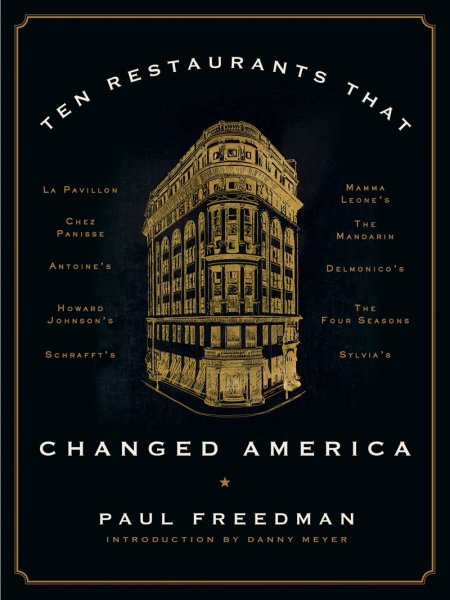



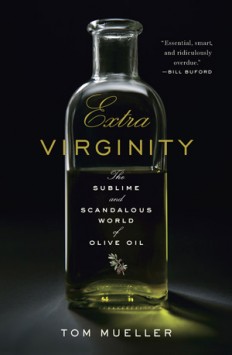
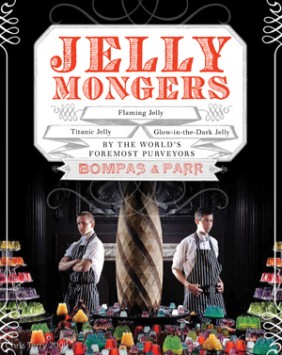
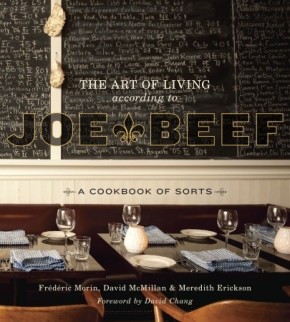

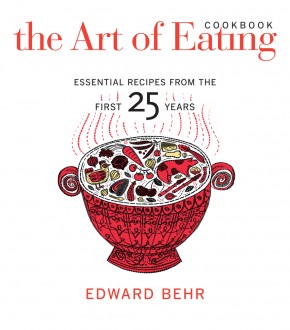
Leave a Reply